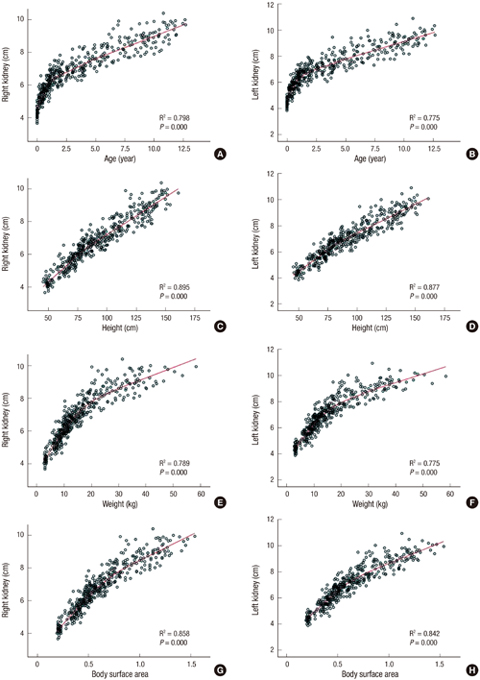INTRODUCTION
MATERIALS AND METHODS
Fig. 1

RESULTS
DISCUSSION
Table 1
Longitudinal lengths of both kidneys in individuals aged less than 24 months

Table 2
Longitudinal lengths of both kidneys in individuals aged between 2 and 13 years

Journal List > J Korean Med Sci > v.31(7) > 1023021




Funding This study was supported by a grant from the Jeju National University Hospital Research Fund (2012).
AUTHOR CONTRIBUTION Literature review: Han S, Lee MS, Choi GM, Han KH. Study concept and design: Choi GM, Han KH. Data collection and/or processing: Oh MS, Hwang G, Han S, Kang HS, Kim SH, Kim YD, Kang KS, Shin KS, Han KH. Statistical analysis and/or interpretation: Oh MS, Hwang G, Han KH. Writing: Han S, Han KH. Critical revision and final approval: all authors.
Min-su Oh 
https://orcid.org/http://orcid.org/0000-0001-5327-0934
Geol Hwang 
https://orcid.org/http://orcid.org/0000-0002-2299-6780
Sanghoon Han 
https://orcid.org/http://orcid.org/0000-0003-0976-9134
Hyun Sik Kang 
https://orcid.org/http://orcid.org/0000-0002-7495-7871
Seung Hyo Kim 
https://orcid.org/http://orcid.org/0000-0001-7277-3748
Young Don Kim 
https://orcid.org/http://orcid.org/0000-0003-2141-9882
Ki-Soo Kang 
https://orcid.org/http://orcid.org/0000-0001-6374-8356
Kyung-Sue Shin 
https://orcid.org/http://orcid.org/0000-0002-7179-9599
Mu Sook Lee 
https://orcid.org/http://orcid.org/0000-0002-0382-5564
Guk Myung Choi 
https://orcid.org/http://orcid.org/0000-0003-0370-484X
Kyoung Hee Han 
https://orcid.org/http://orcid.org/0000-0002-6830-7311